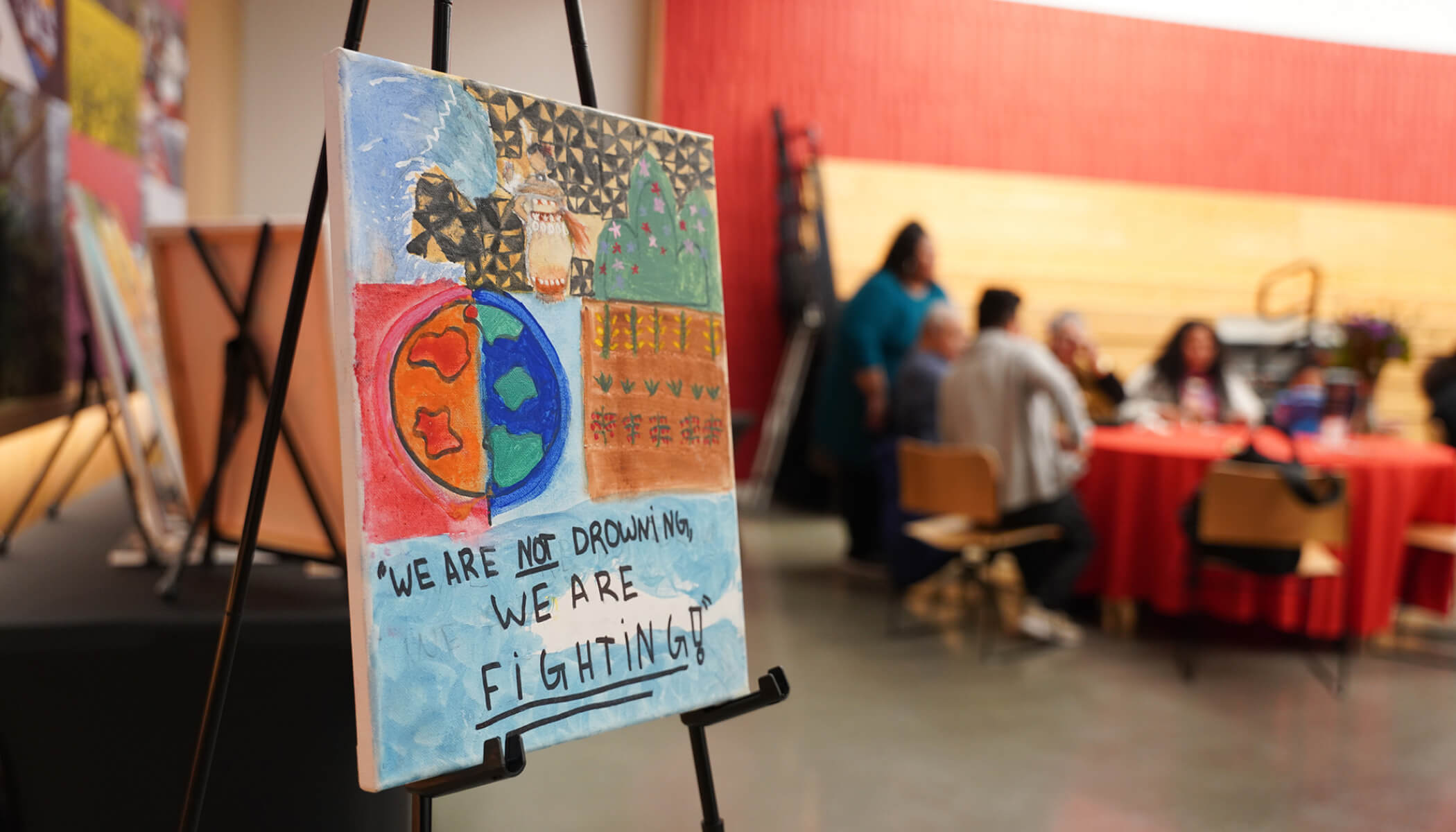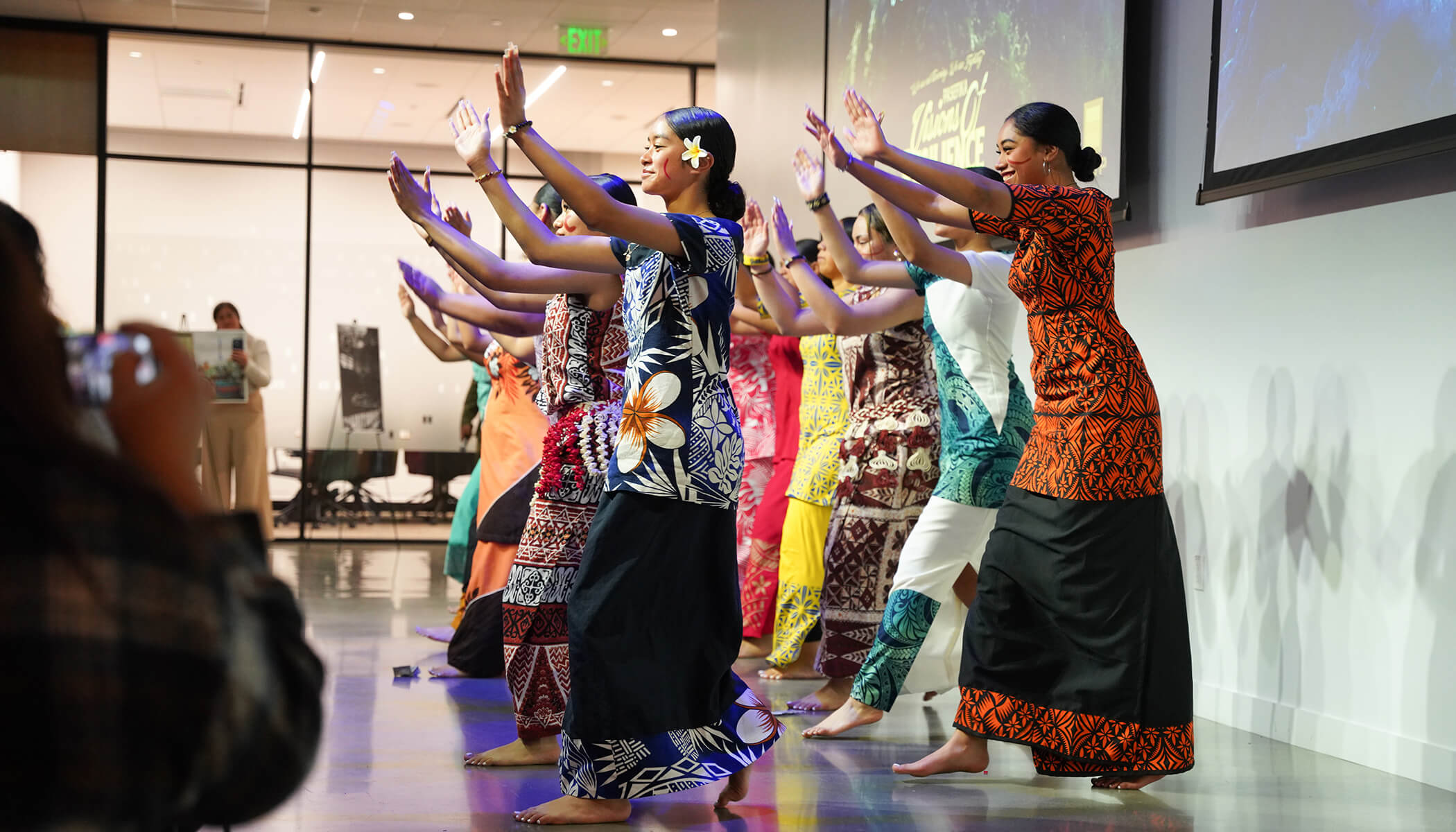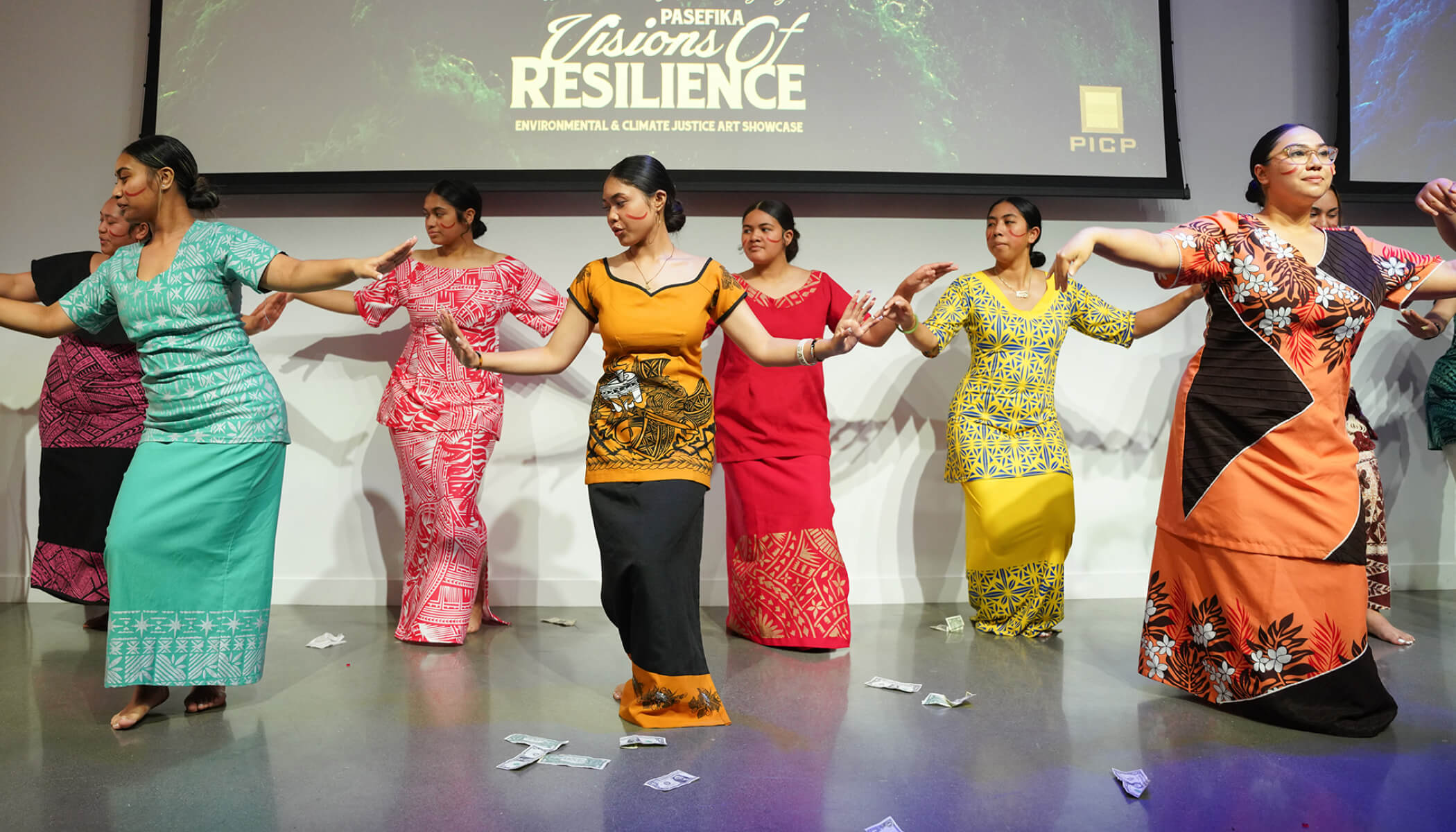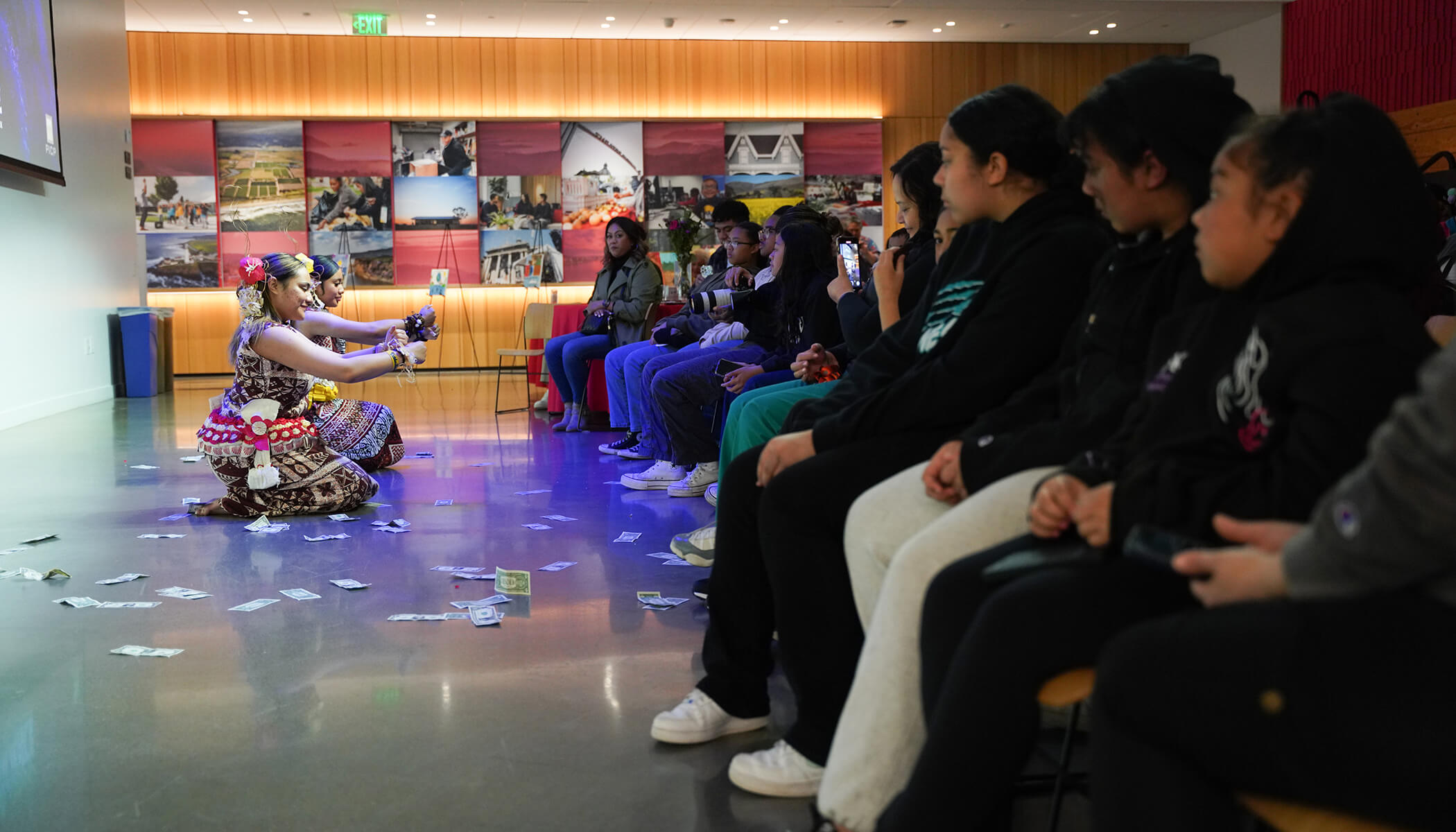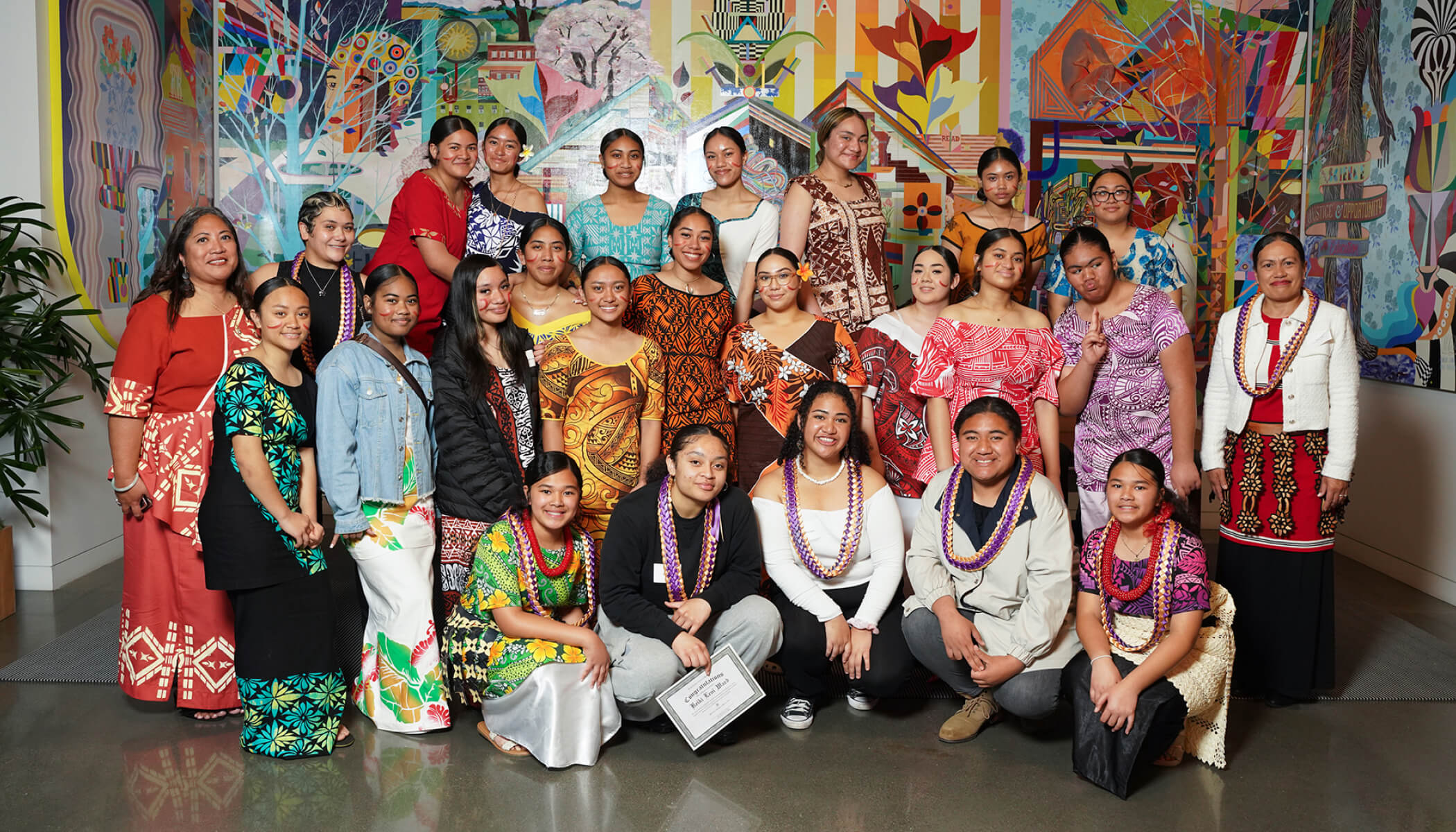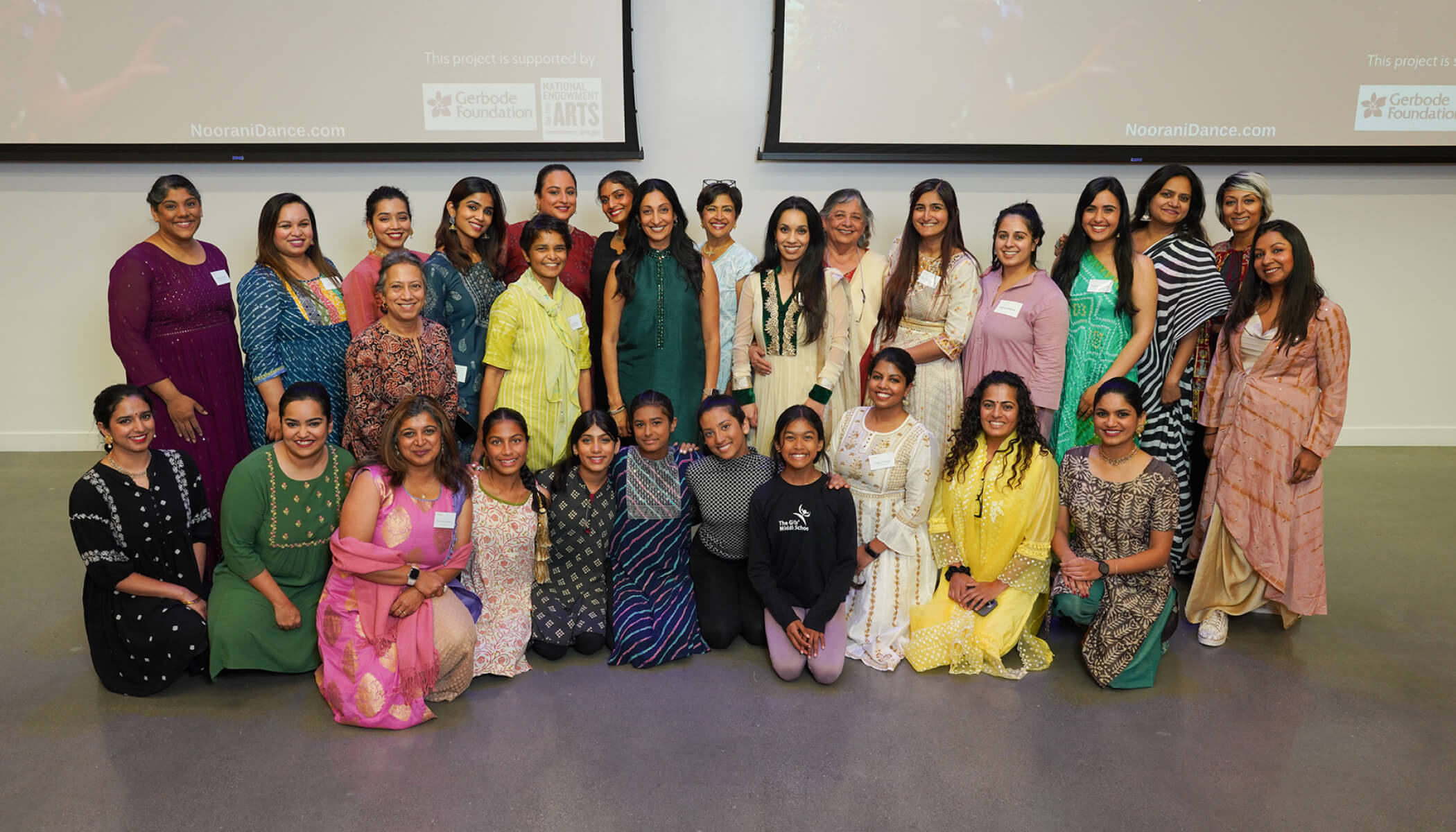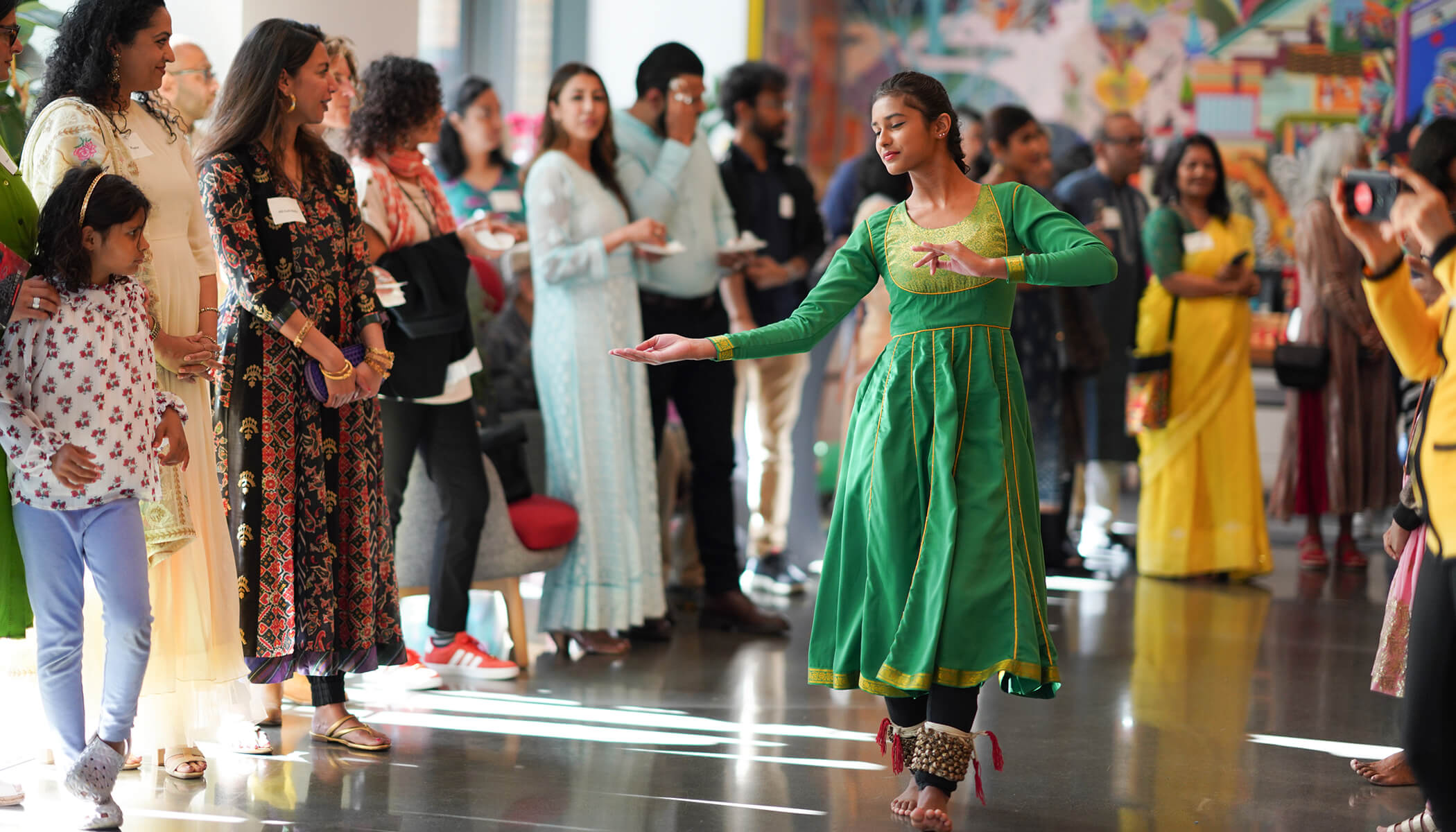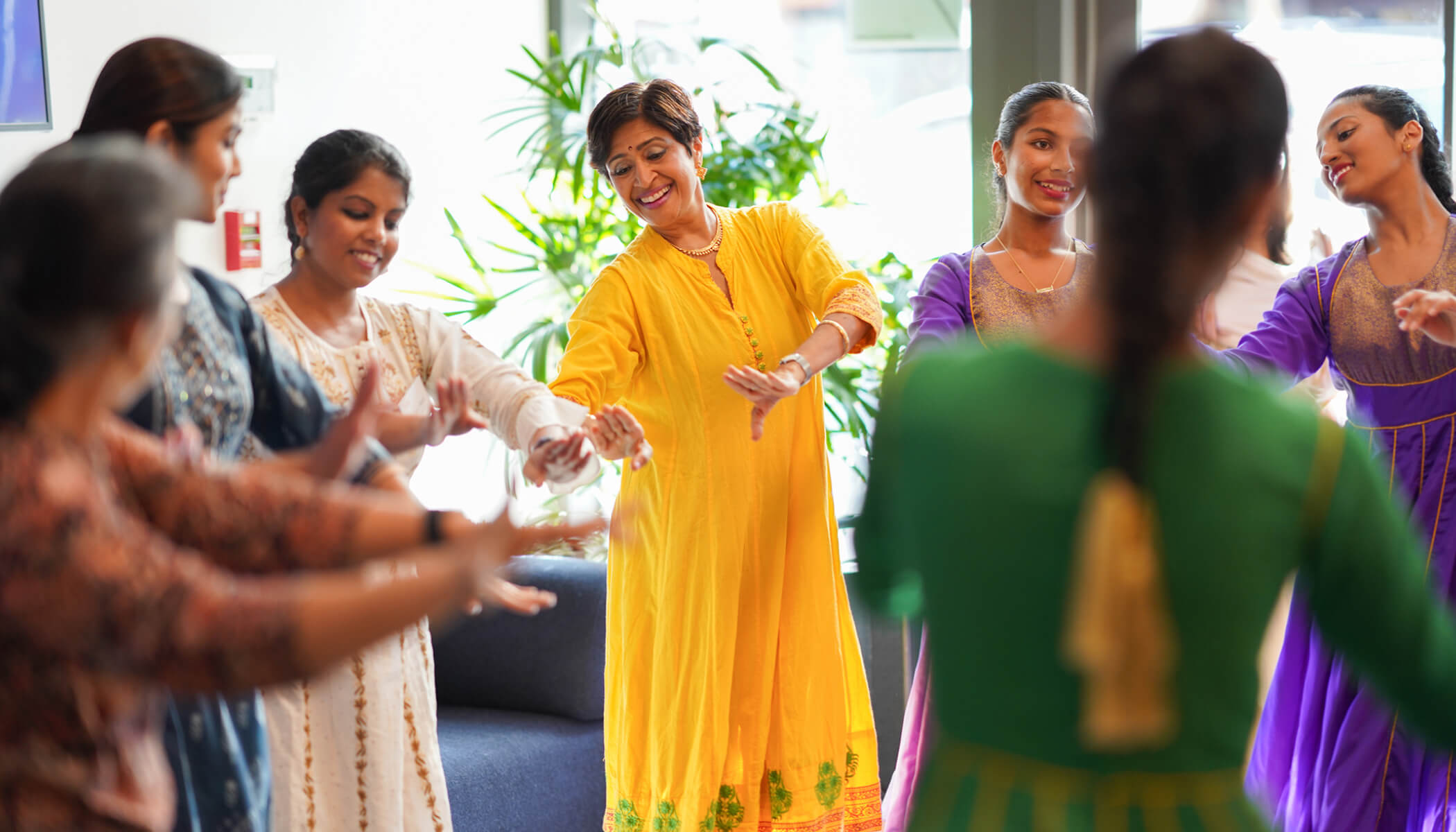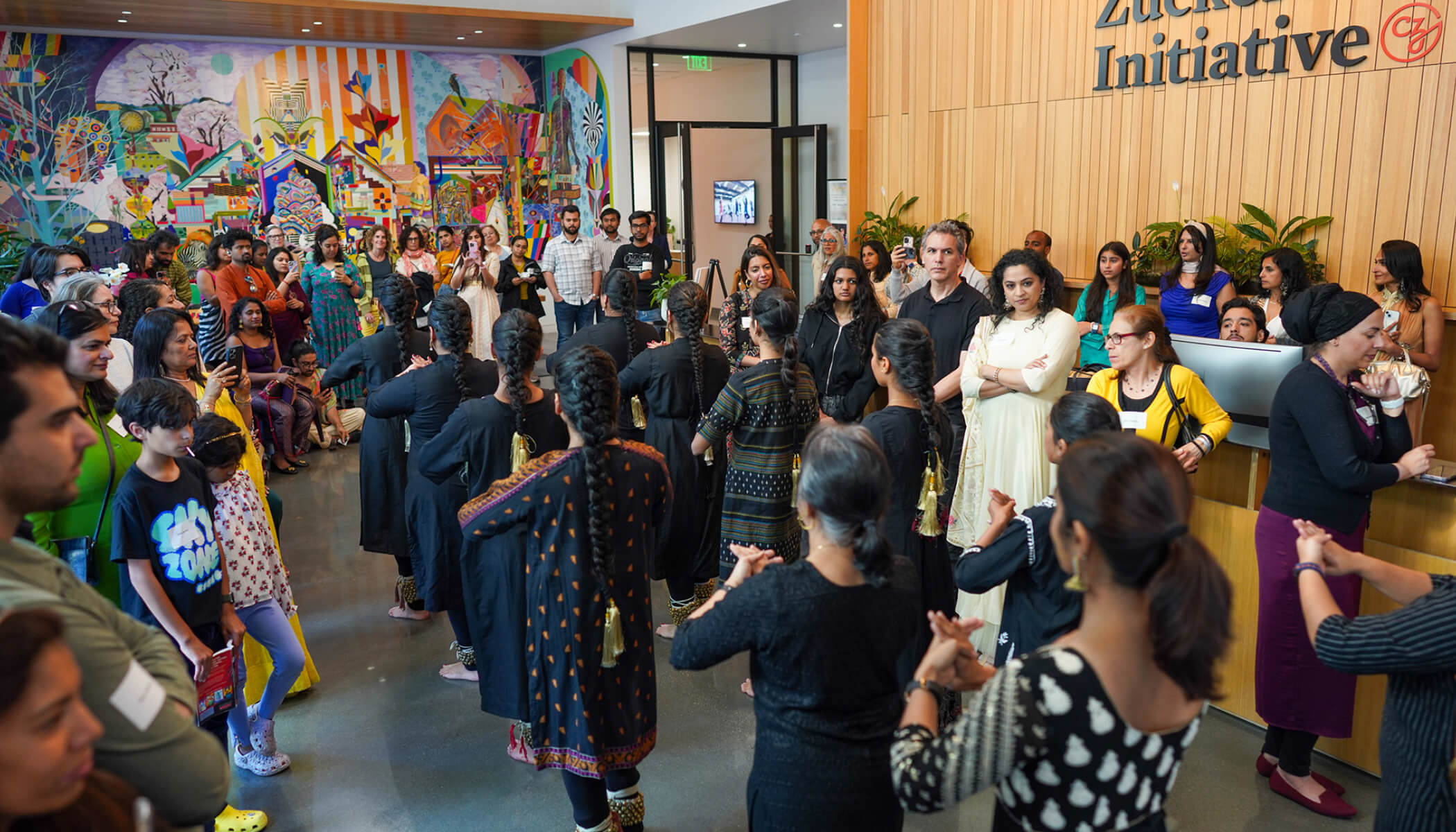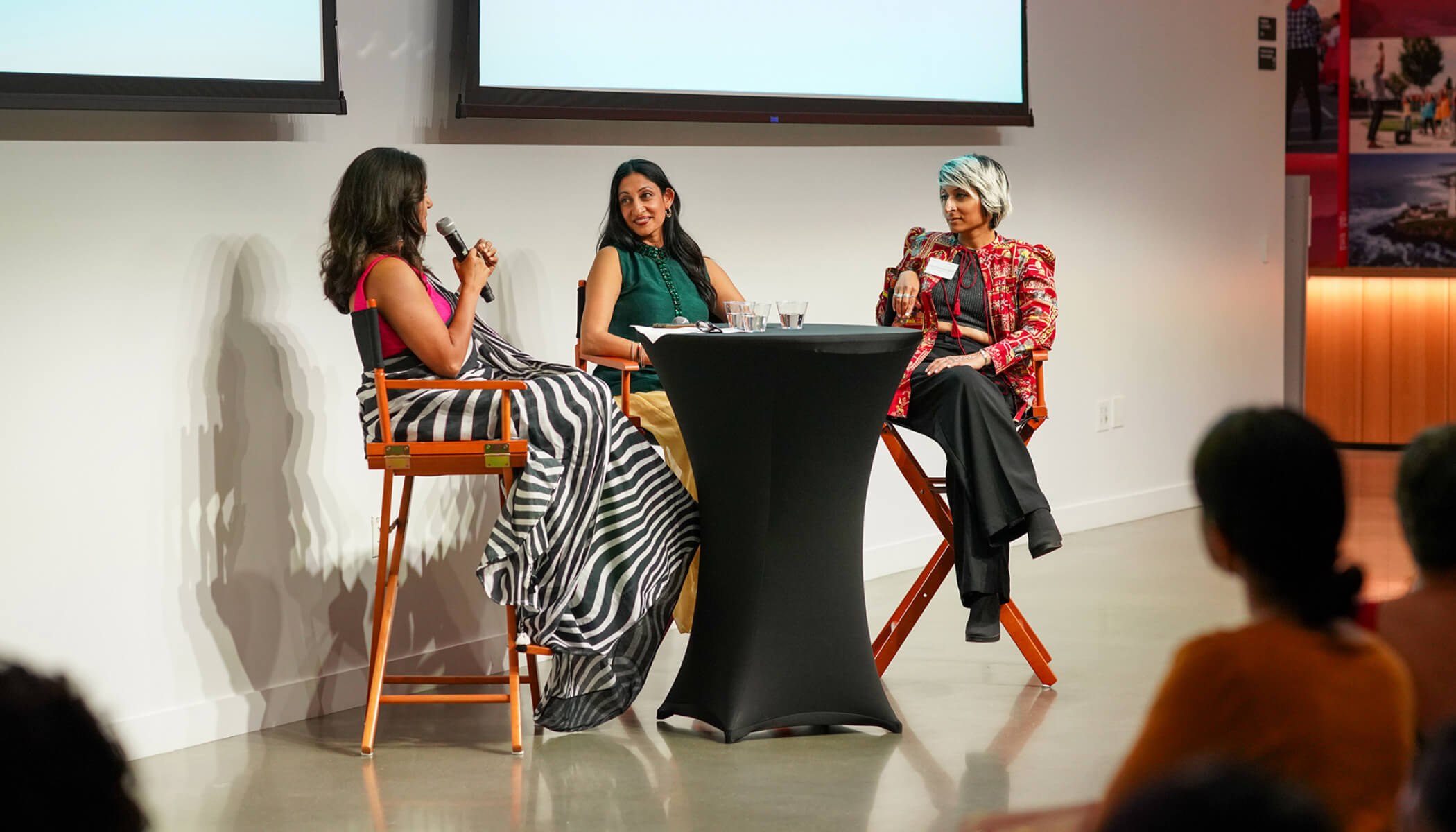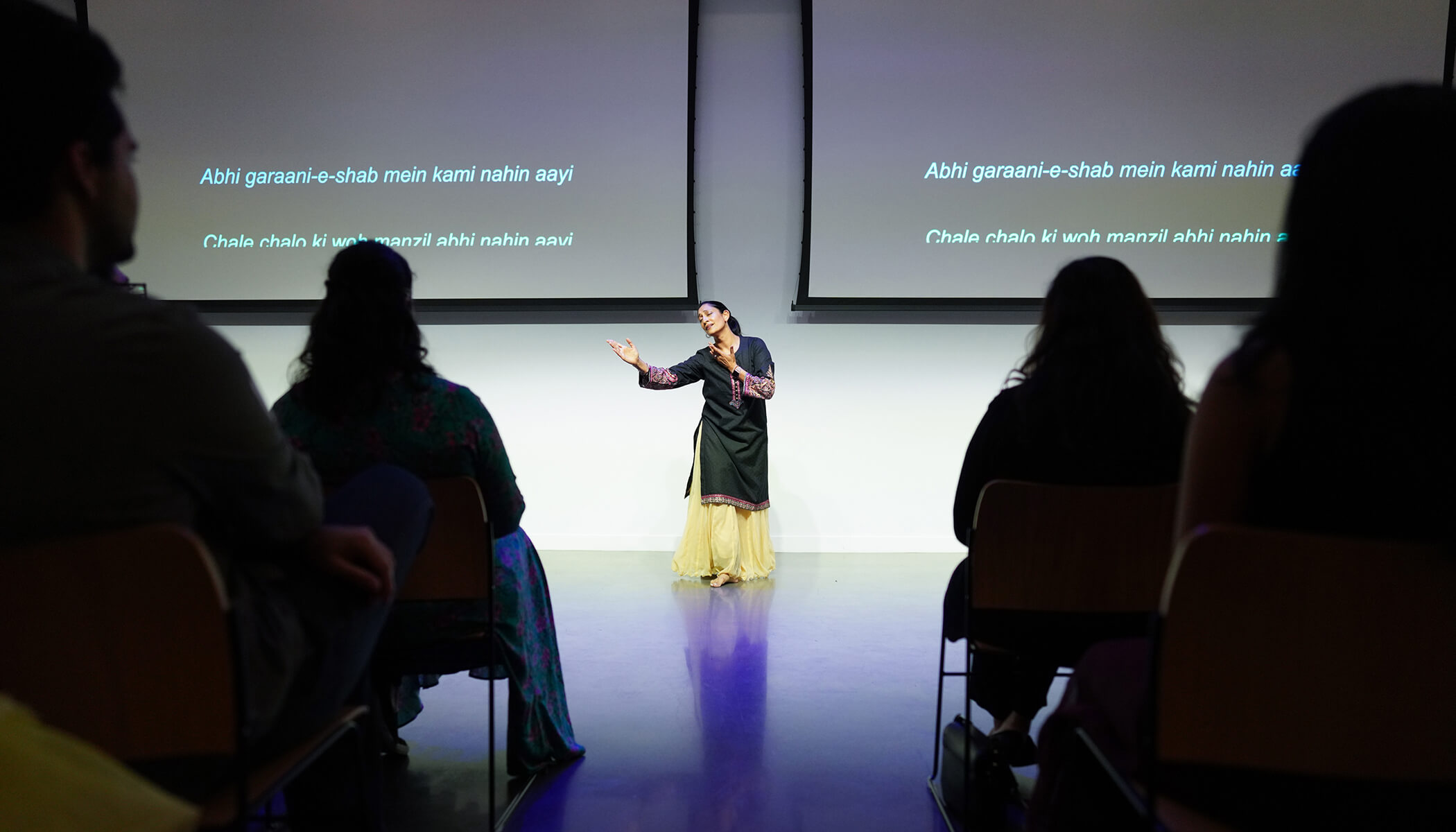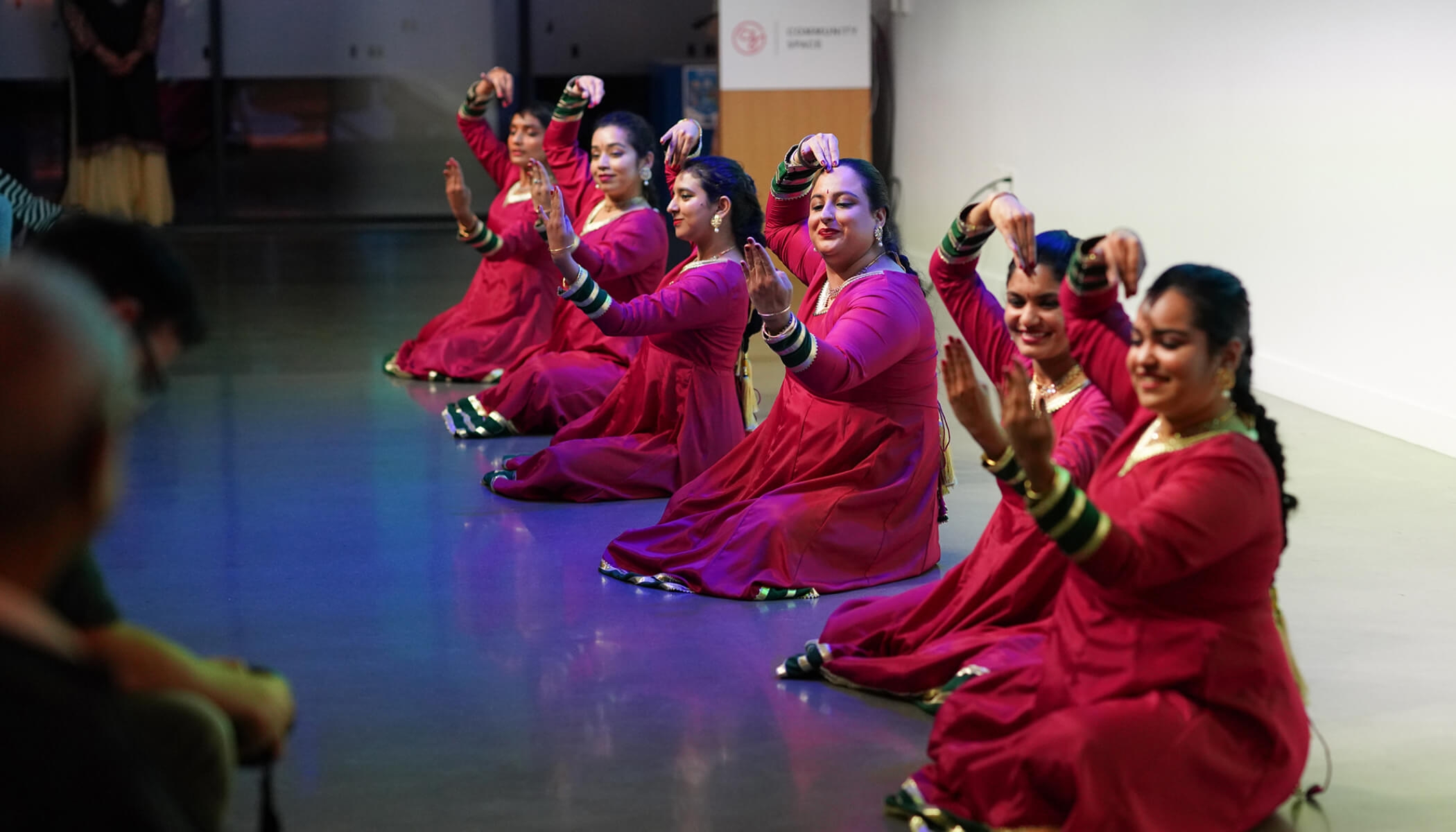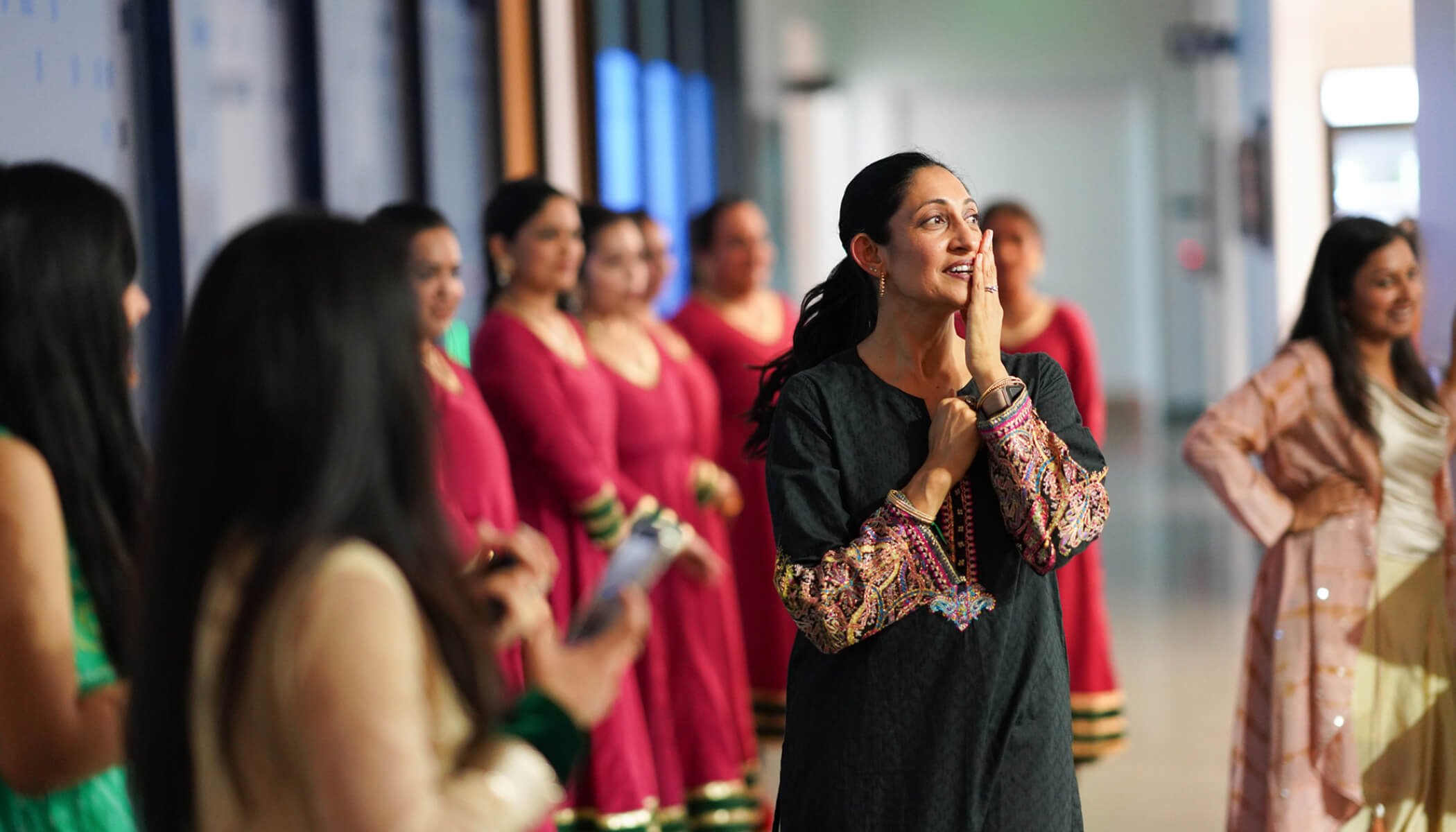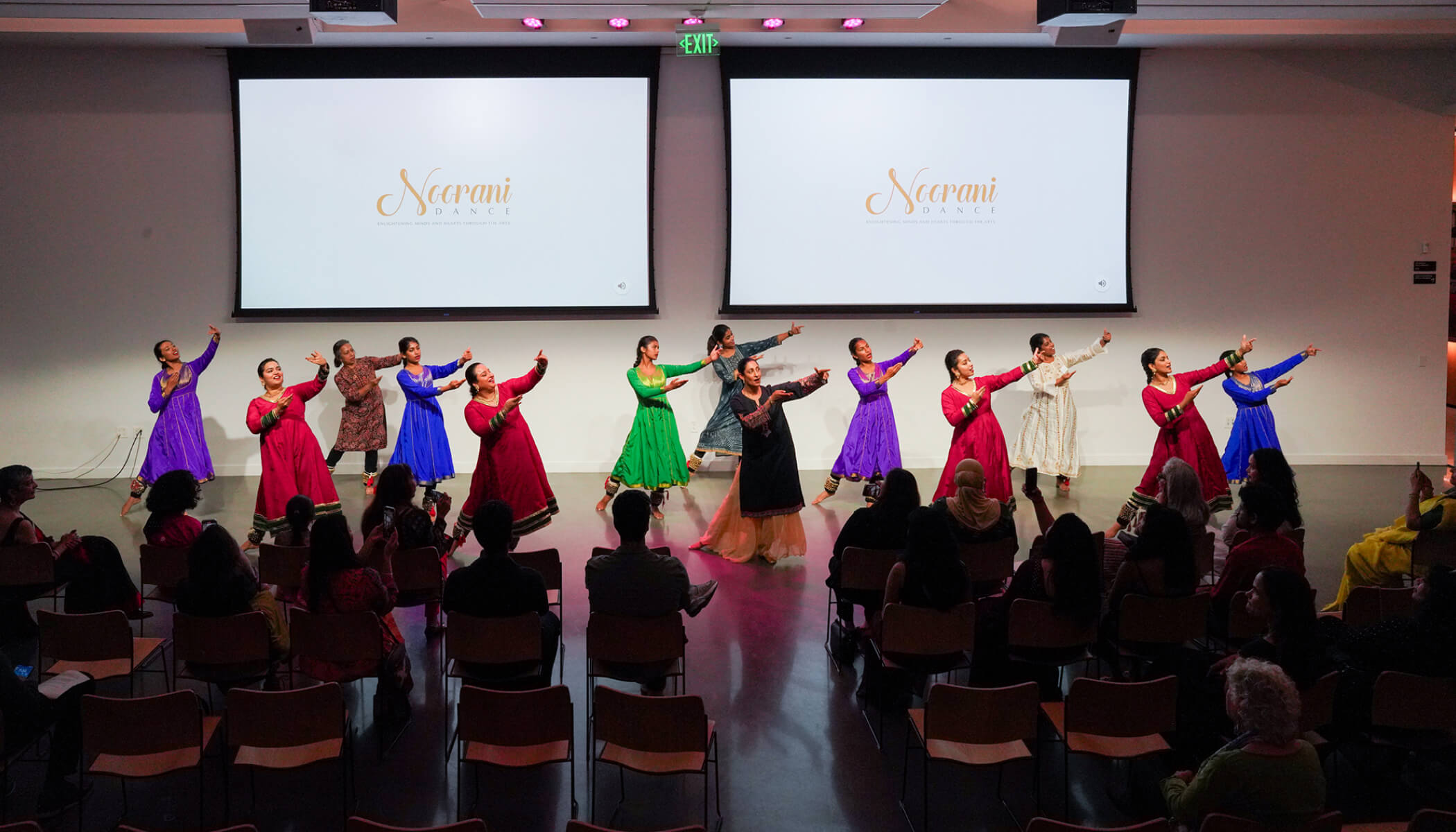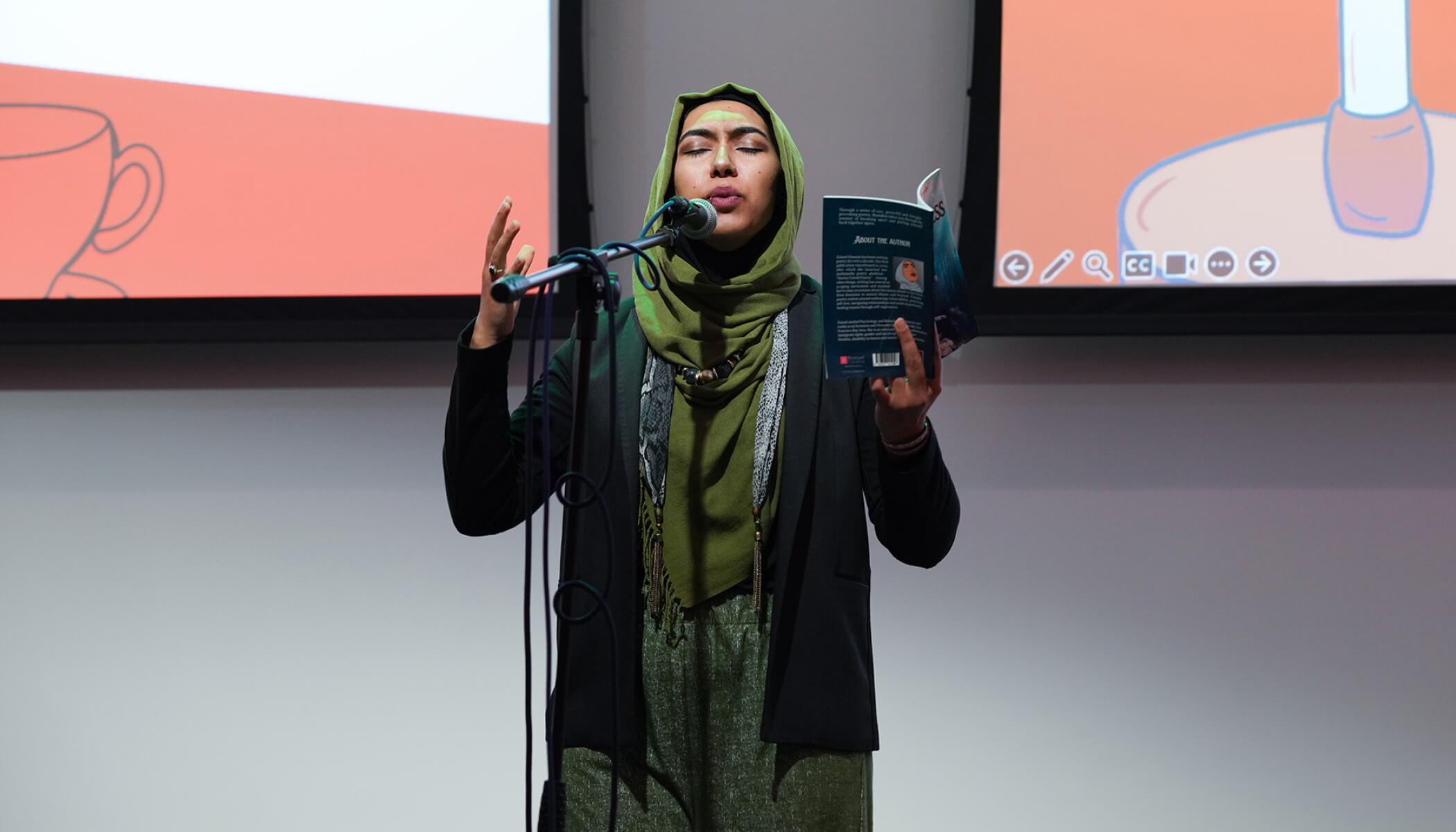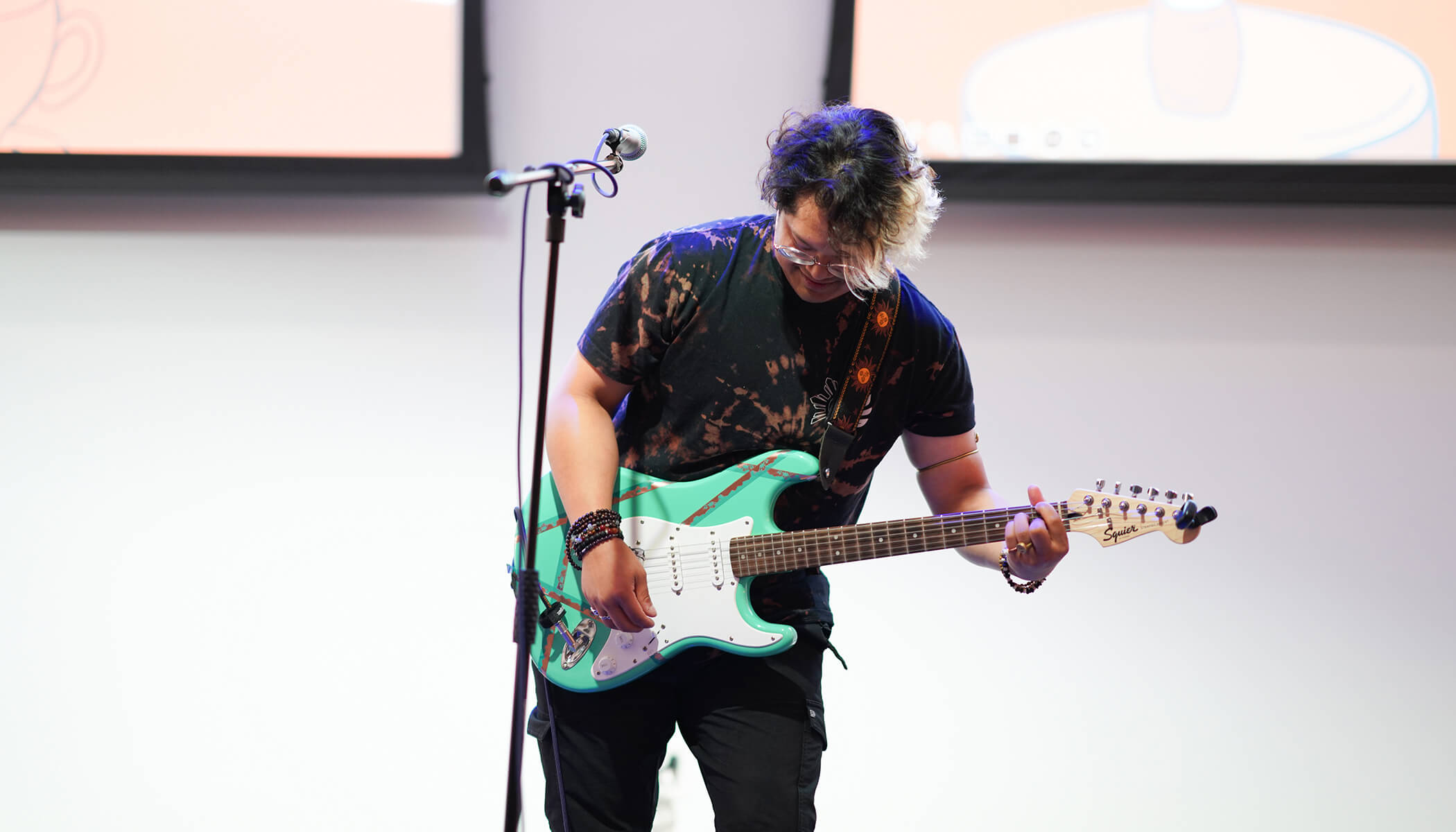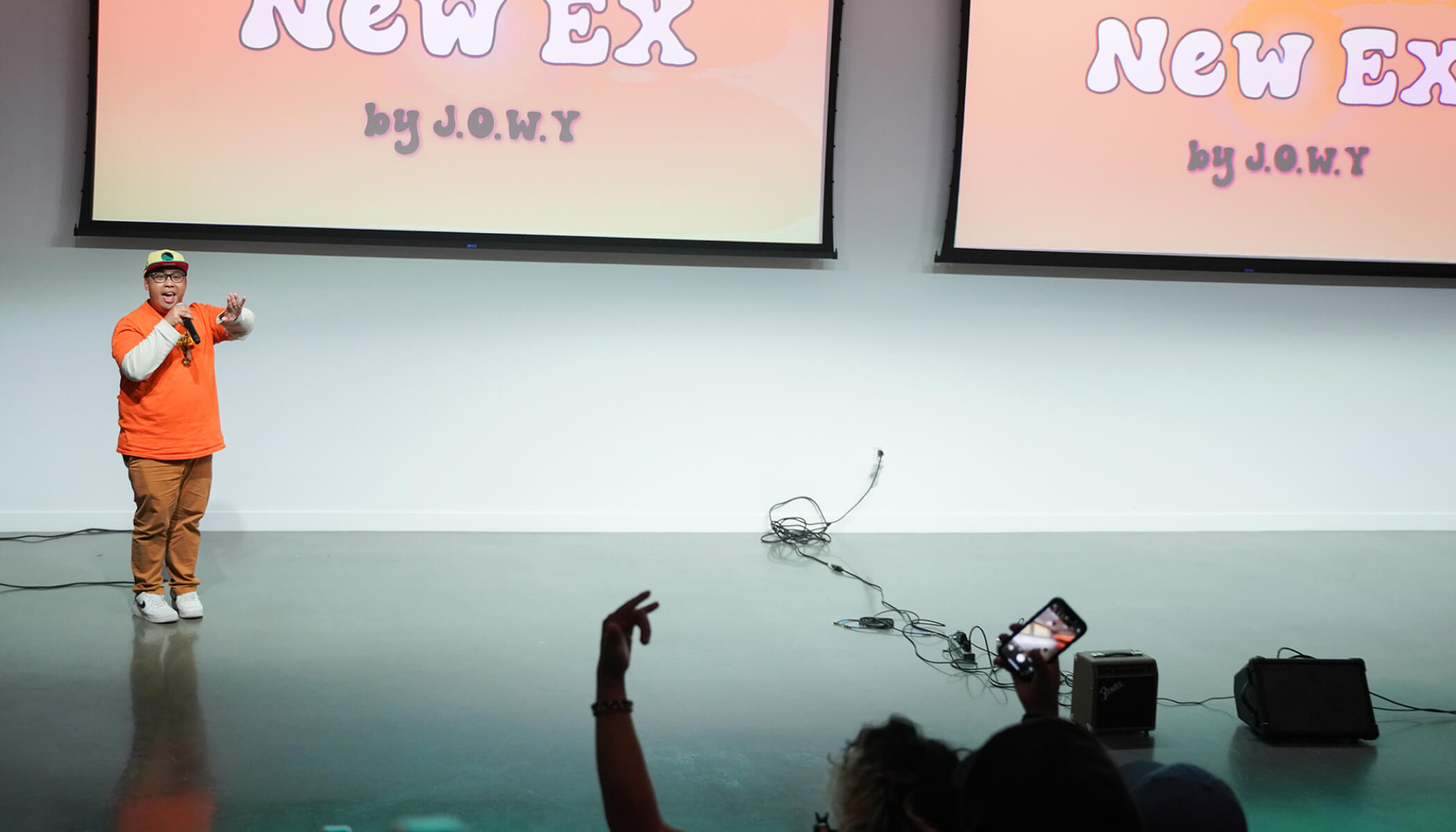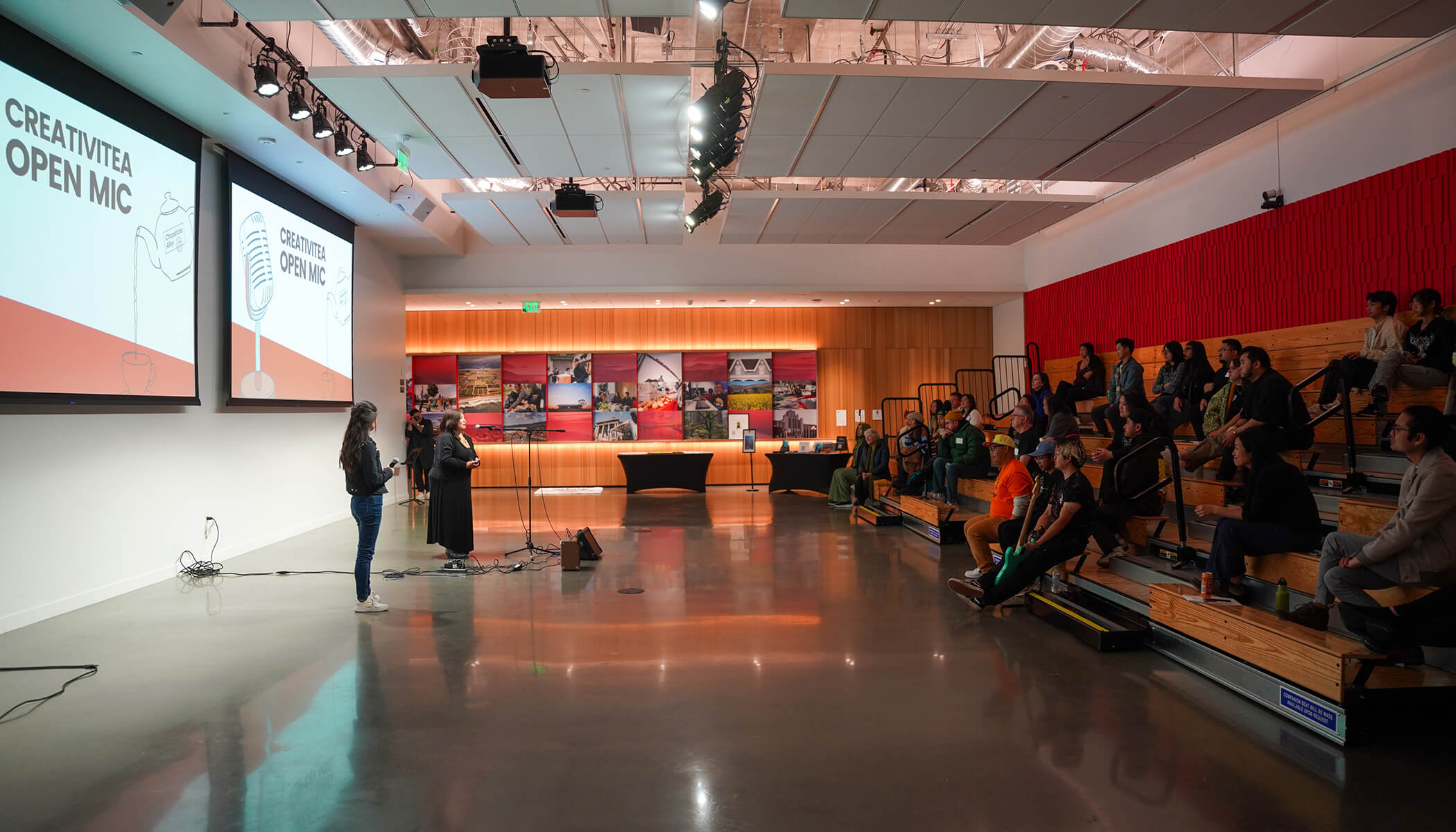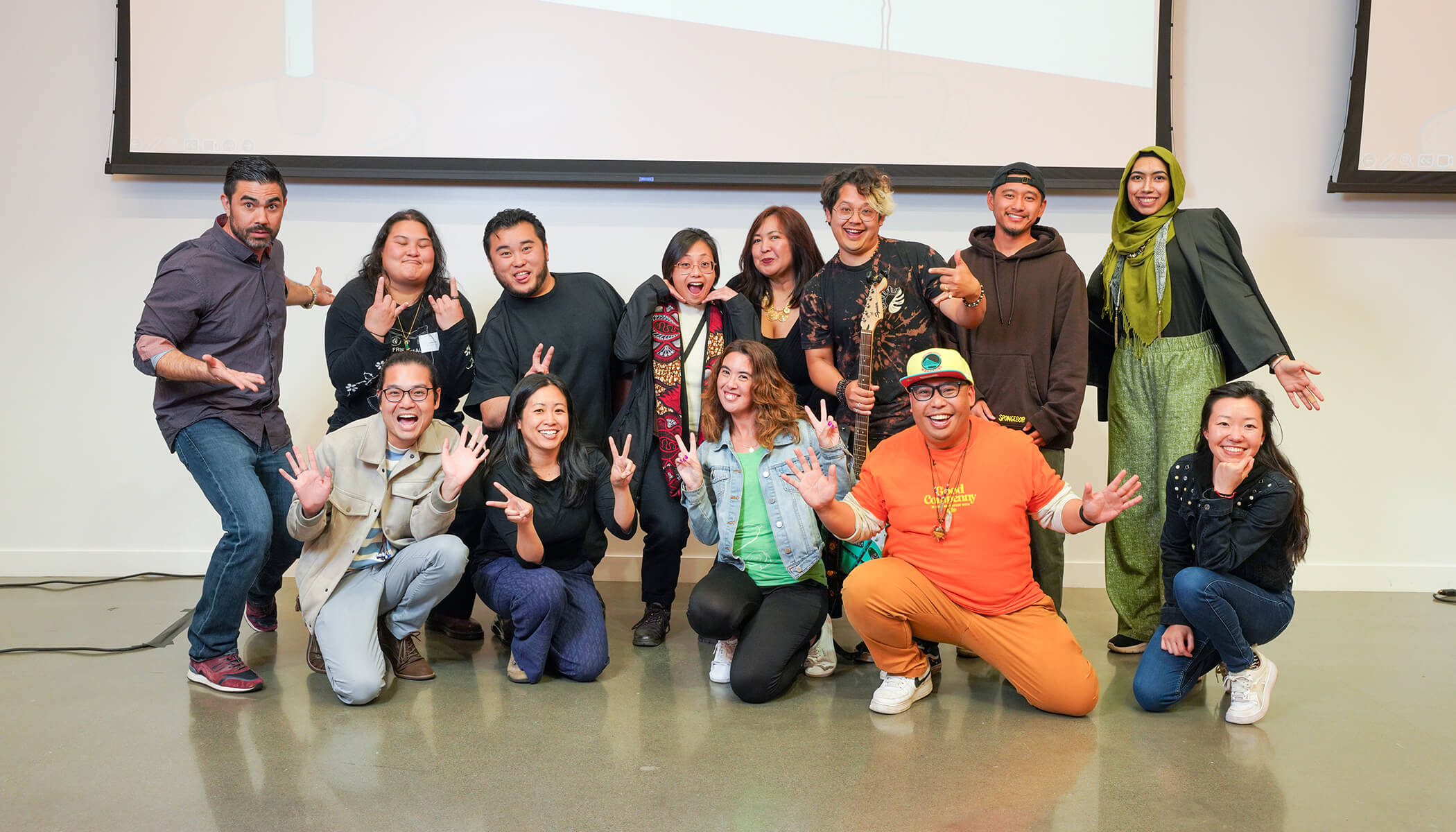Jun 11, 2024 · 5 min read
Uplifting AANHPI Voices: Performing Arts in CZI’s Community Space
This spring, three local performing arts organizations shared their stories, culture and identities in the CZI Community Space. We are uplifting their stories in honor of Asian American, Native Hawaiian, Pacific Islander Month.
CZI created the Community Space in 2020 to catalyze healing, community-building and learning. Our mission is for the space to be transformational for the community members who walk through its doors, whether to explore a new art exhibit, talk with experts on housing affordability, or network with nonprofit organizations. Through our programming in this space, we also want to learn more about how nonprofits build a stronger and more equitable San Mateo County and Bay Area, California.
This mission came to life in many beautiful ways this spring through educational and dynamic cultural performances honoring Asian American, Native Hawaiian, Pacific Islander and South Asian communities. Through dance, poetry and powerful conversations around identity, resilience and activism, the Pacific Islander Community Partnership, Noorani Dance and Stir Fry Stories — funded by CZI partner Redwood City Parks and Arts Foundation to perform in the Community Space — shared a piece of themselves with us.
The Redwood City Parks and Art Foundation selected each organization to perform in the Community Space to allow them to spotlight their mission and work in the local community. We’re telling their stories in honor of Asian American, Native Hawaiian, Pacific Islander (AANHPI) month in May.
Pacific Islander Community Partnership
For 15 years, the Pacific Islander Community Partnership (PICP) has engaged, educated and empowered diasporic Pacific Islander communities along the San Francisco Peninsula in California. Part of this mission is carried out through enrichment and development programs that immerse youth in Pacific Islander culture, including the arts.
PICP shared, “Pasefika Rise — Visions of Resilience,” in the Community Space, a collection of traditional dances taught and performed by local Oceanic communities representing the Pacific Islander triangle of Polynesia, Melanesia and Micronesia.
The performances centered around climate justice, an issue affecting many communities in the Pacific and around the world.
However, Reno Anoa’i, PICP’s community engagement coordinator, says second- and third-generation diaspora families often overlook climate change because they don’t see how it affects their own lives.
PICP intentionally uses the arts to educate their youth — and their audiences — on environmental justice by sharing stories of their land and advocating for healthier ecosystems.
“There’s intentionality in every hand movement, every leg movement, every word that’s being shared in our dances, even in our adornments,” says Anoa’i. “What we wear comes from certain places in our villages. The songs we sing tell stories of our ancestors and how we’ve gotten here.
“A lot of times when Pacific Islanders are asked to share cultural numbers, people have an idea of exactly what they want — they want to see fire knives. They want to see our hips moving fast. Our authenticity is often lost in the translation of what people want. We wanted to be a bridge and utilize the Community Space event to show people what we’re really about.”
That night, the organization also awarded $2,500 in scholarships to Bay Area students who replied to a prompt about climate change — centered on the theme, “We are not drowning, we are fighting” — and how it impacts them. Students submitted poems, artwork and songs.
For PICP Founder and Executive Director Papali’i Manūfou Liaiga-Anoa’i, holding the event in the Community Space meant having access to a space that allowed them to share who they are freely.
“Event spaces continue to be a barrier for many communities of color,” says Liaiga-Anoa’i. “To be able to convene ourselves in a space that was very accepting, and where we felt comfortable, was a beautiful experience.”
Noorani Dance
Noorani Dance kicked off its May Community Space event with an unexpected twist.
The group first performed in the Community Space lobby, dancing to “Dekho Kaisa Naach Banaya” (meaning, “Look at What the Dance Makes”) and more as guests wrapped around them, cheering and clapping. Dancers then made their way into the main event space, barefoot and in a single file, the bells on their ankles jingling ceremoniously in the otherwise quiet lobby. Their movements evoked the simulation of a train, a vital figure of the 1947 Partition of British India, which separated the sub-content into what is now India and Pakistan. The partition led to the displacement of thousands of refugees who fled by train.
For Farah Yasmeen Shaikh, founder of Noorani Dance, performing — and teaching others to dance — is a way to celebrate her South Asian heritage (her parents were born in Bombay, India, and moved to Pakistan after the 1947 Partition) and highlight the socio-political issues that affect this community. It’s a calling that she’s answered for nearly 30 years.
Noorani Dance is based on the art of Kathak, a classical dance of South Asia that uses hand movements, extensive footwork and expression to tell stories. The performance in the Community Space was a sneak peek of the group’s fall production, “Saabit Qadam,” — Urdu words meaning “perseverance.”
The show uses dance, music, poetry and multimedia as a vehicle to explore the politics of identity in Pakistan, where artists are, “constantly fighting forms of religious conservatism, politics that often suppress certain societal behaviors, and significant issues around gender and women’s rights,” says Shaikh.
Shaikh’s work centers around “HeARTivism,” the idea of using the arts as a form of activism. That was on full display in the Community Space, where during one performance titled “Train,” dancers dressed in black formed a train and walked guests from the lobby into the main event space as projectors displayed words like “forced migration,” “human displacement” and “society divided.”
The event also included a conversation centered on heARTivism with Pakistani-American filmmaker, activist and entrepreneur Iram Parveen Bilal and yoga educator Anjali Rao. Shaikh said she hopes the event showed people who Noorani Dance is and fostered opportunities for collaboration, dialogue and community building.
“We wanted to give people a window into the intentions of our fall project and hopefully present an opportunity for introspection of their own history and culture, and how and where art shows up for them in relation to it,” she says.
Shaikh also hopes the performance allowed people to unearth difficult conversations around identity politics.
“Just like watching a good movie or listening to a song that invokes a particular emotional response, dance is a visual art form,” Shaikh says. “It feels like a calling, not just for myself but for the people who have joined me in this intention. I feel a great deal of responsibility to use it as a medium to bring these conversations to the surface.”
Stir Fry Stories
CreativiTea Open Mic allowed local AANHPI artists to share their innermost thoughts and artistic talents with an intimate audience in a safe, welcoming space. Themes of family, resilience, heartbreak and laughter flowed through each performance.
Before they stood in front of a mic in the Community Space that night, each of the eight Asian American presenters shared first with each other. They gathered privately in a conference room near the main event space. It became their green room, allowing each to share more informally and personally ahead of the show — and inspiring them to cheer a little louder for one another as they shared a piece of themselves before an audience later that night.
Presented by Stir Fry Stories and Chopsticks Alley Art, which celebrate Southeast Asian and Asian cultural heritage through storytelling and the arts, the event was a curated, multidisciplinary showcase that included songwriters, poets, a rapper, and a rugmaker.
The low-key nature of CreativiTea, centered around AANHPI voices, “allows for stories to be told and heard with ease in a warm and supportive community,” says event producer VC Tang.
Tang, a writer and interdisciplinary artist based in the Bay Area, produces pop-up readings integrating nature, food, music, and movement. Her work addresses the challenges of modern livelihoods, arts advocacy, climate change, and racial belonging.
She says the Community Space presented an opportunity for genuine, in-person connection and sharing — an art form that sometimes seems lost in the age of technology and social media. It also allowed them to pilot a casual and intimate performance that welcomed artists from all genres and experience levels, ranging from first-timers to poet laureate.
“In a time when stories are consumed on screens at the press of a button, it is imperative that we remember that we can know a working songwriter from our town, rather than a downloadable file, headliner concert, or published book,” Tang says. “Art can be experienced live. And art can be local.”




